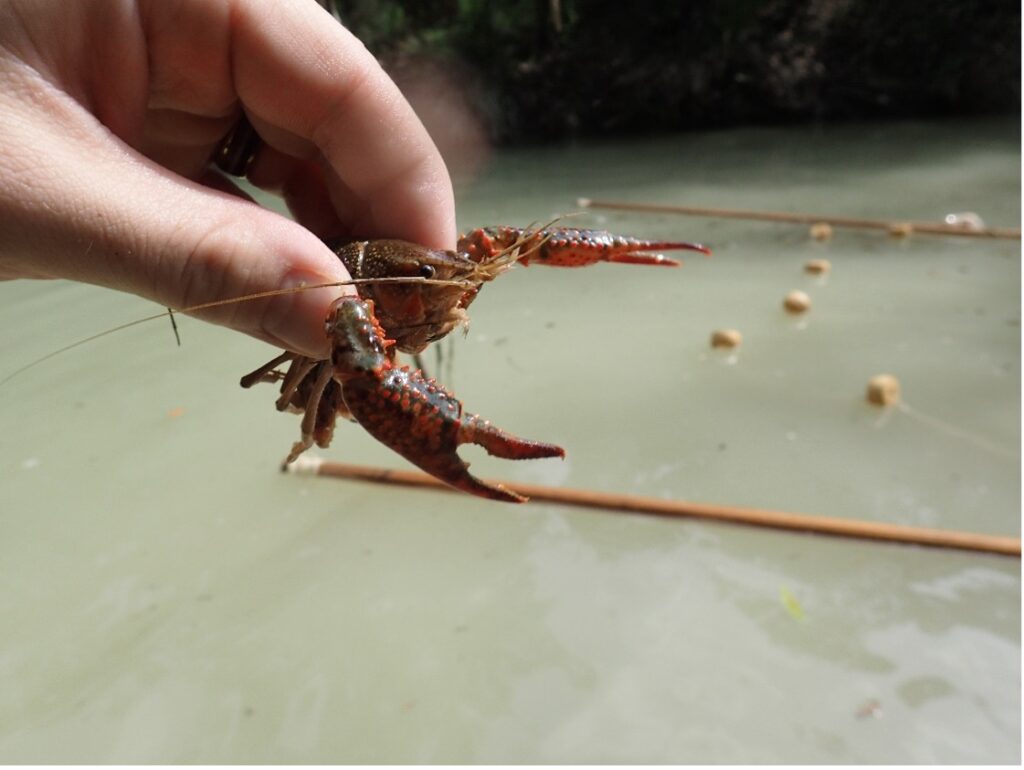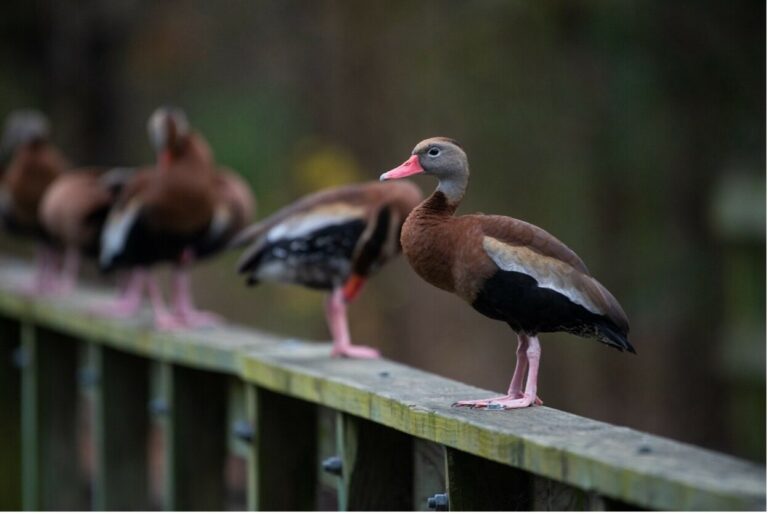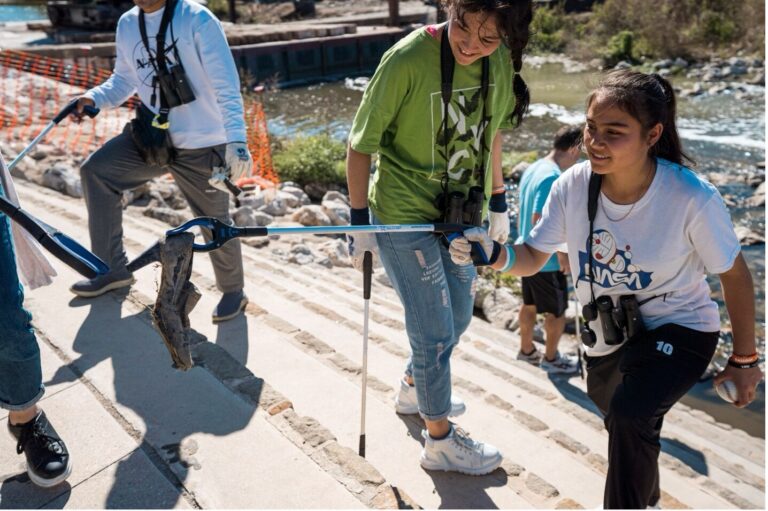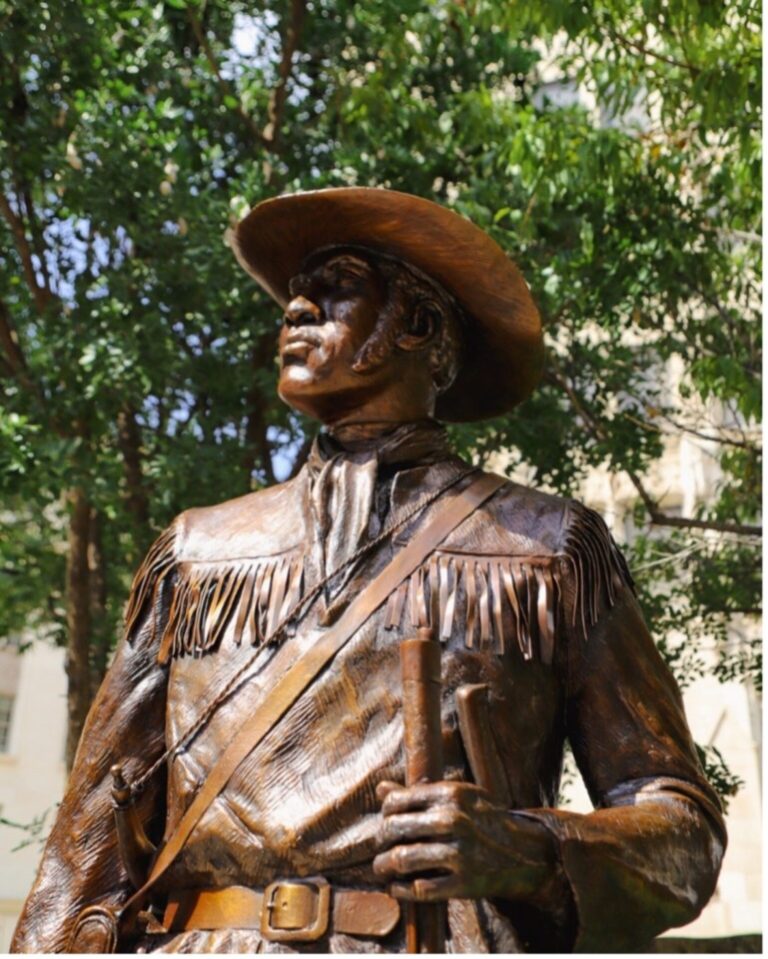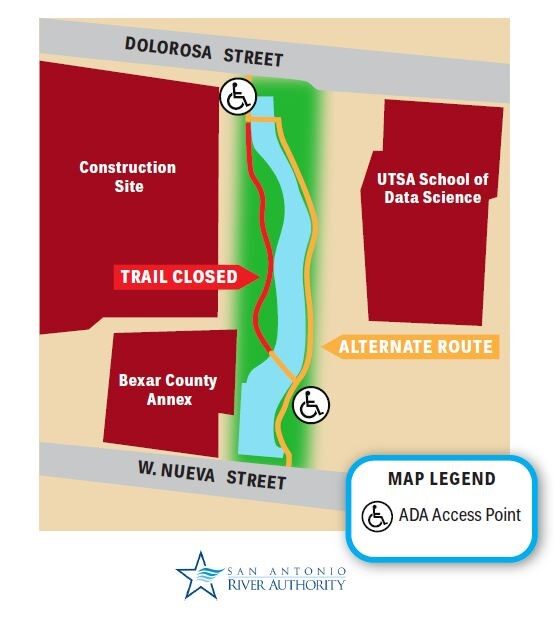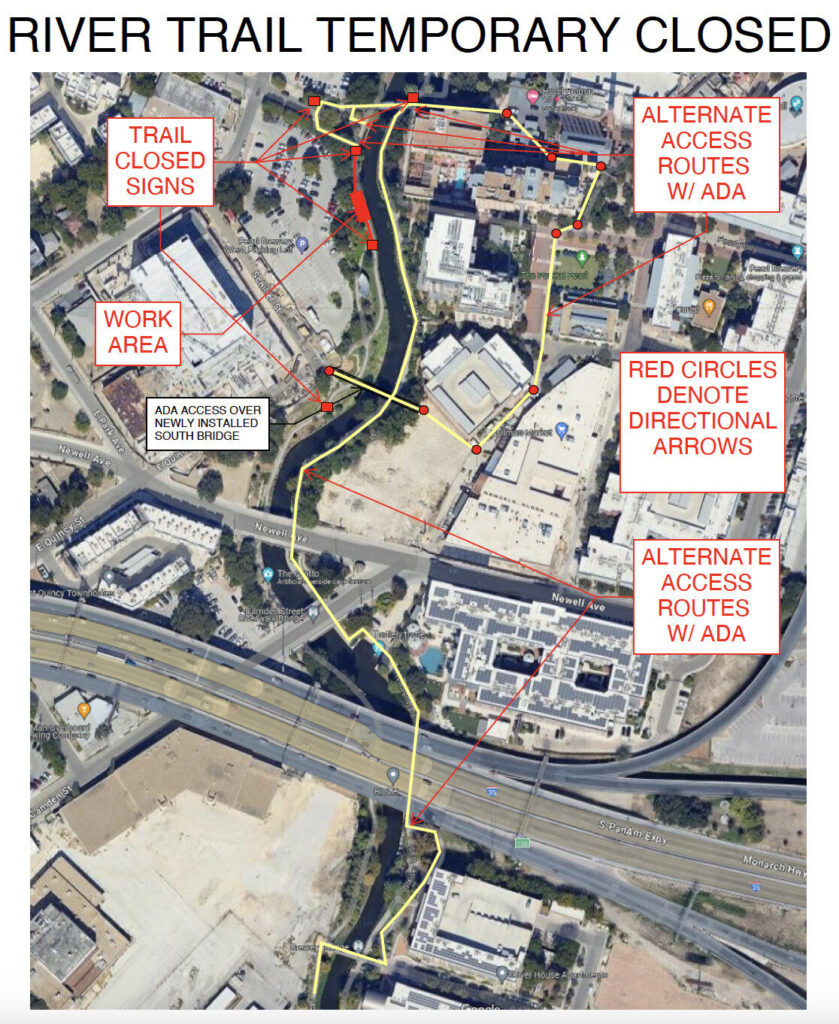Shell-o River Authority blog readers! Today we’re highlighting a claw-some critter that is an important species in our local creeks and rivers: the freshwater crayfish! These crustaceans benefit the health and stability of the ecosystems they inhabit, including the waterways of our San Antonio River Basin. By the end of our journey together, we hope you’ll learn that crayfish can be more than food at a Cajun-style boil—they can be friends too. So, let’s get cray!
Crayfish, Crawfish, or Crawdad?
All of these terms refer to the same freshwater crustacean, but which one you use depends on where you live! We Texas folks are likely to call them “crawfish,” Northerners are likely to say “crayfish,” and “crawdad” is often used in states like Arkansas, Oklahoma, and Kansas. In Louisiana, where 93% of the United States’ crawfish farms are located, people also refer to them as “crawdaddies” or “mudbugs.” Scientists at the River Authority use the name crayfish, as it is the term most used locally and in scientific publications.
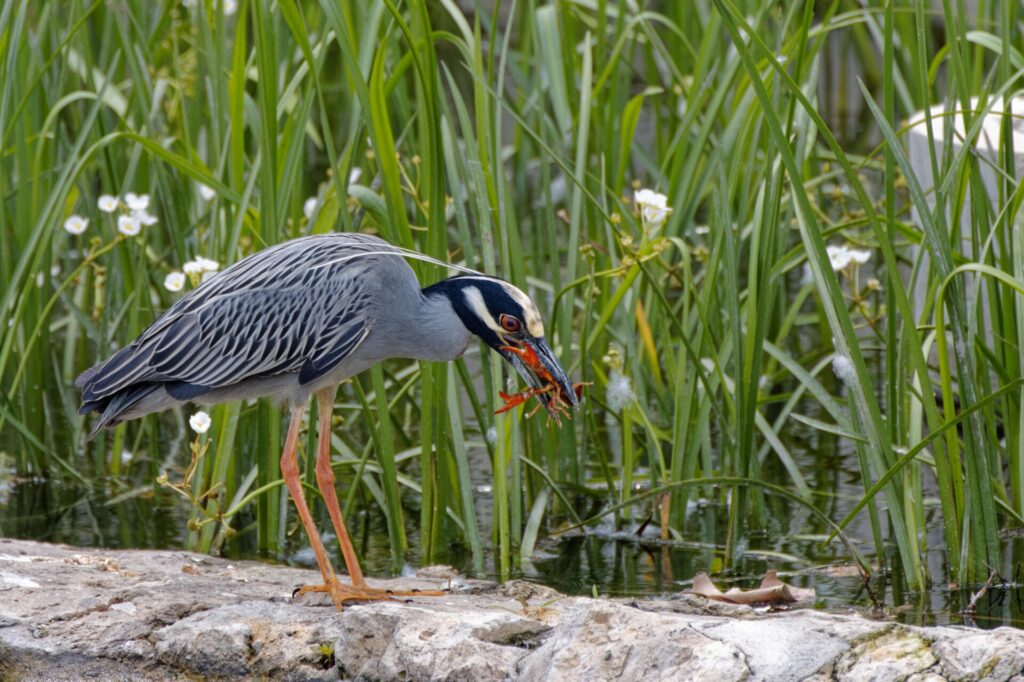
Humans aren’t the crayfish’s only predator. Herons (like the Yellow-crowned Night Heron pictured here), egrets, kingfishers, many kinds of native fish including gar and eels, turtles, frogs, snakes, and raccoons all enjoy snacking on crayfish!
Ecosystem Engineers
Crayfish are one of our river’s ecosystem engineers, as most species will create burrows or chimneys for them to hide or take refuge. Crayfish, by creating burrows, improve the flow of water underground and the soil structure. They mix and move nutrients closer to the surface, benefiting many plant species and fostering stronger root systems, which minimizes erosion. In addition, these burrows provide habitat for several species of snakes, frogs, toads, spiders, insects, and mammals.
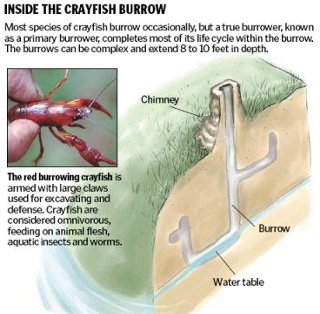
Almost all crayfish species create burrows, which often extend as low as the groundwater, widen at the bottom, and have a side passage to a nearby stream or ditch. Photo Credit: TWRA.
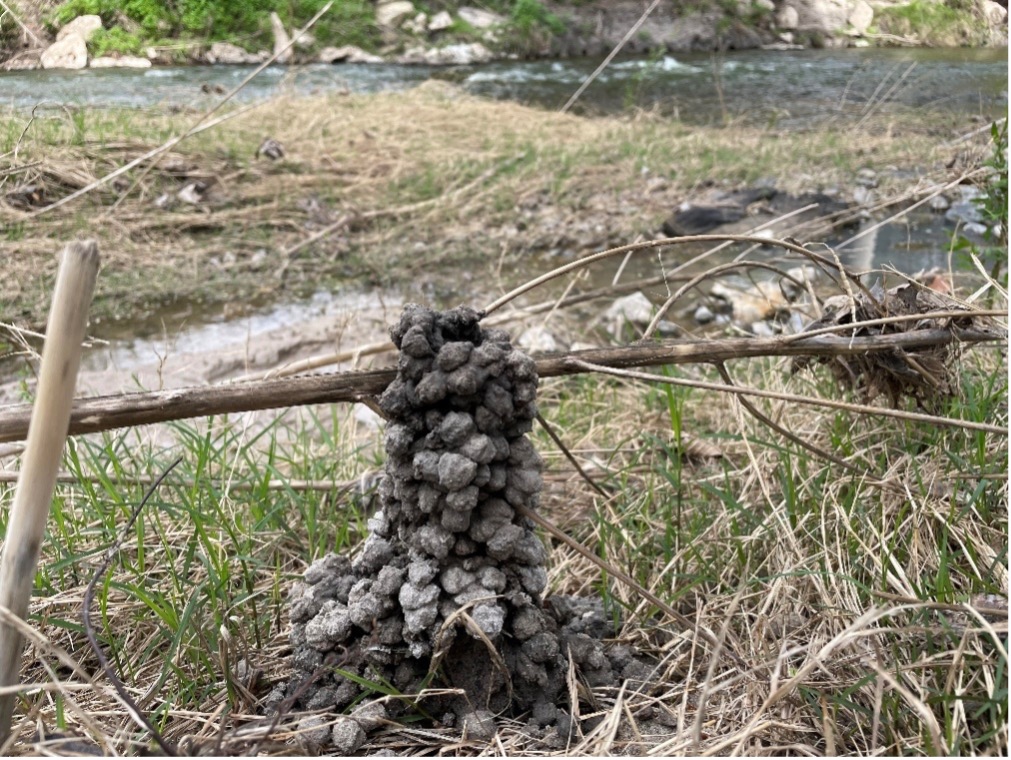
The Chimney of a crayfish burrow on Cibolo Creek
That’s not all! Crayfish directly upcycle nutrients back into their ecosystems by decomposing dead and decaying organic matter into finer materials that other organisms can eat. As an integral part of our rivers, their presence gives experts insight into the health of our river ecosystems.
What species of Crayfish live in the San Antonio River Basin?
Within our river basin, we commonly find only one species, the Red Swamp Crayfish (Procambarus clarkii). Although this species is native to the central-south-eastern portions of the US and Northern Mexico, it has spread to many other areas of the United States and around the world where it is invasive. This is likely because Red Swamp Crayfish is the species that is commercially harvested for human consumption (the kind you see in a crawfish etouffee!)
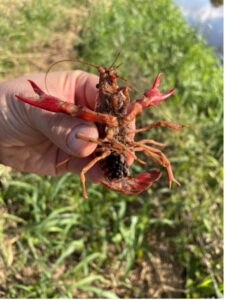
Did you know? As important as their conservation is, 48% of crayfish in North America face endangerment due to their small range size and degradation of their freshwater habitats.
Could there be other species in our basin that we are not aware of? The Nueces Crayfish (Procambarus nueces) is a critically imperiled species that scientists have found in the Nueces River Basin to our west and the Guadalupe River Basin to our east, but not in our basin. Because there isn’t a ton of research, there is ample opportunity for aquatic biologists and scientists to learn more about the crayfish species in the San Antonio River Basin. This may be one of many species yet to be discovered here!
Where can you find crayfish?
These critters primarily live in lakes, ponds, rivers, streams, and flooded ditches. They particularly like mucky streams with lots of hiding spots—leaf pack, root mats, cut banks, gravel and cobble. In the San Antonio River, you can find them wherever there is a semi-permanent water source—including the downtown San Antonio River Walk. Some species spend most of their time underground in their burrows, but the Red Swamp Crayfish will typically seek their burrows during environmentally extreme periods (e.g. drought) and when they reproduce.
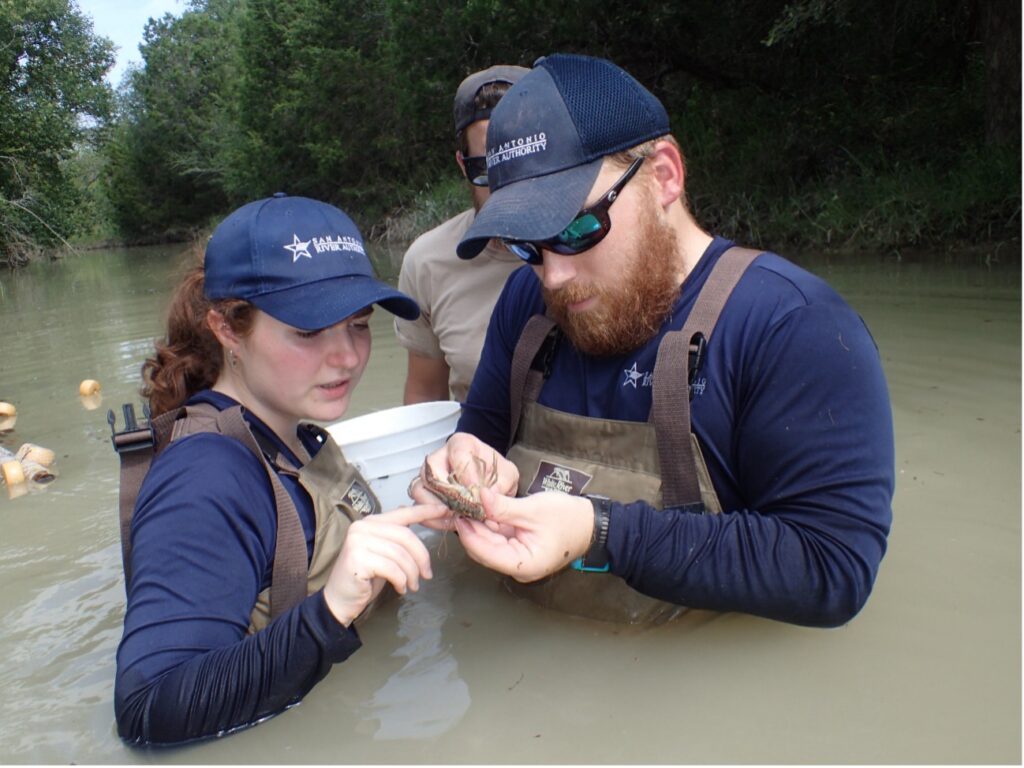
River Authority biologists collected this Female Red Swamp Crayfish with eggs from a burrow.
A Tribute to Crayfish
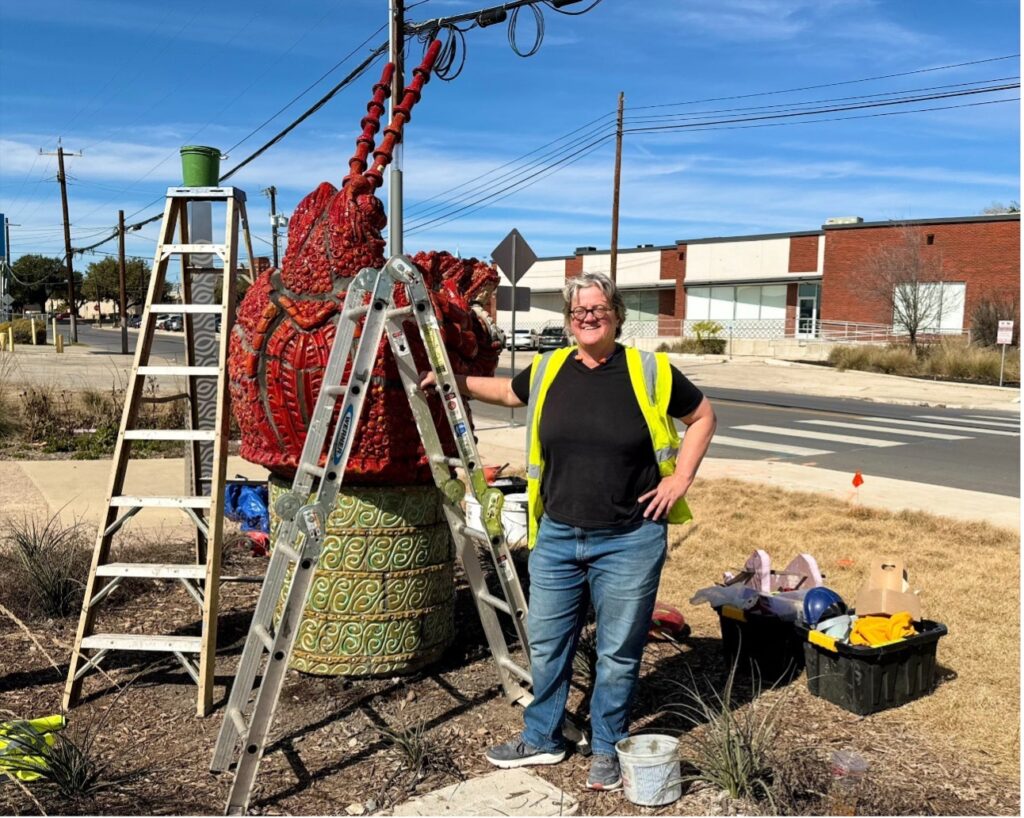
Diana Kersey and her team finished a new trailhead sculpture along San Pedro Creek last month. We chatted with her to find out about her “in-craw-dible” inspiration for this public work of art!
What inspired you to choose crayfish as the model for the trailhead?
I attended CreekFest last year and invited folks to make some clay animals and talk about their memories of San Pedro Creek. Multiple people talked about playing around the Springs that bubbled up in San Pedro Park and playing with crawdads. I, too, have fond memories of finding them in a creek that ran behind my grandmother’s house in Austin. So, I thought it would be fun to honor the crayfish for the San Pedro Creek Trailhead.
How does it feel seeing the sculpture completed?
I am thrilled it all came together! This sculpture was challenging and fun to make. There is a saying in art: Make it good. If you can’t make it good, make it big. If you can’t make it big, make it red. Hopefully, everyone will think we hit the trifecta of Good, Big, and Red on this one!
I hope that when you attend the Fiesta Flotilla event on April 21, you will stop by my table and offer suggestions for the “Name the Crawdad” contest!
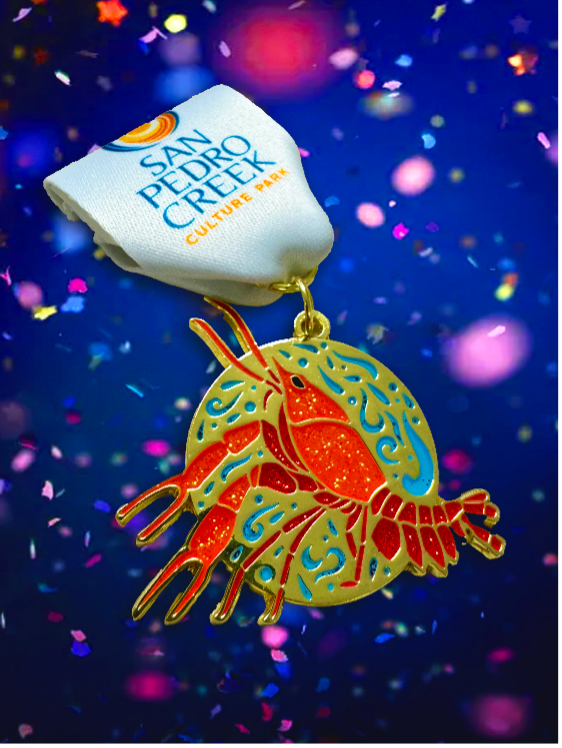
The 2024 San Pedro Creek Fiesta Medal celebrates the crayfish!
Thanks for joining us on this deep dive into the incredible world of freshwater crayfish. The next time you visit your local creek or river, we hope you take a moment to celebrate these amazing organisms!

